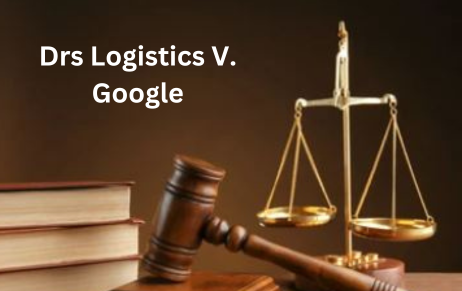ABSTRACT The project employs doctrinal research methods, i.e. secondary research which involves writing on basis…
CCPA issues ‘Guidelines on Prevention of Misleading Advertisements and Endorsements for Misleading Advertisements, 2022’
Abstract
The Central Consumer Protection Authority (CCPA) on 9th June 2022 issued the “Guidelines for Prevention of Misleading Advertisements and Endorsement for Misleading Advertisement 2022” with immediate effect.[1] The main objective of these guidelines is to curb misleading advertisements and protect consumers from unfair trade practices. The guidelines will be applicable to all forms, formats, or media of advertisement manufacturers, services, and products that are related to the advertisement. The advertisement agencies, endorsers, and service providers will also be covered under this.
Introduction
Advertisement plays a vital role in the sale and service of a product in various fields. It is important to have proper guidelines for protecting consumers from untruthful and misleading claims. The Central Consumer Protection Authority (CCPA) under section 18 of the Consumer Protection Act 2019[2] exercised its power to identify and confer what is permissible and what is prohibite
Guideline in detail
These guidelines basically focus on bait, free claim advertisements, and advertisements targeting children. The guidelines say that if the advertisement doesn’t meet the standard/characteristics of the product or services it will be considered misleading. The characteristics mentioned in the guidelines for advertisement are not to do misleading advertisements but to have honest and transparent representations, must ensure that the claim must fulfil its promise, not to be used for publicity, and suggest claims which are universally accepted.[3]
[Image Source: Istock]
 Bait Advertisement
Bait Advertisement
This guideline defined bait advertisement as goods, products, or services offered at a low price to attract consumers. The guideline doesn’t completely prohibit bait advertisement but it imposed some conditions for it. The main condition of these guidelines is that in the issued bait advertisement the price of the products/services is the exactly same as promised in the advertisement. Further, it should satisfy the demand on supply production. If the product is limited it must be indicated. Similarly, any condition related to geographical or age restriction must be indicated.
-
Surrogate Advertisement
The Guidelines strictly prohibit indirect/surrogate advertisement. It clearly states that no advertisement can directly or indirectly suggest products or services which is prohibited by law. For proper clarification, it must be read with rule 7(2)(viii) of the Cable Television Network Rules,1999 which indicates in what circumstances use of the same brand as used on ‘prohibited’ goods could be advertised in the context of other permissible goods/services.
-
Free Claims
The Guidelines deal with the advertisement which claims no cost for goods/services mandates that such advertisements shouldn’t claim chargers from goods/services if they are claiming it free and further shall indicate the extent of commitment that consumer shall have to make to take advantage of the free offer. It excludes unavoidable costs.
-
Advertisement Targeting Children
The advertisements which are targeting children shall not encourage or inspire unreasonable claims that could be dangerous for children. Advertisement claiming health benefits without proper scientific testing is not permitted. Giving children unreasonable expectations with the feature of goods/services is not allowed.
-
Rules for Disclaimers
These guidelines lay down rules for disclaimers in advertisements. Related provisions are there in the ASCI (Advertising Standards Council of India) Code. According to the guideline, the disclaimer must bring clarity, and transparency without any ambiguity in the claim. It shouldn’t hide important information related to any claim mentioned in the advertisement.
- Responsibilities of manufacturers, service providers, advertisers, and advertising agencies.
The Guideline also talks about the responsibility of manufacturers, service providers, advertising agencies, and endorsers, to ensure that the claims made in advertisements are assessed, substantiated, verified, or supported by relevant data.
Penalisation for non-compliance of the Guidelines
The Guidelines do not separately set out penalties for non-compliance. However, on conjoint reading with the Act, penalties stipulated under the Act including the imposition of fines ranging from INR 10 to 50 lakh by the CCPA, would apply in case of violation of these Guidelines. Similarly, although no specific enforcement mechanism has been set out under these Guidelines, the CCPA could exercise powers for investigation and enforcement including those as laid down under section 18 of the Act.
Conclusion
These guidelines will tighten up the loose area of publishing advertisements and will reduce the room for advertisers to play with the grey area for creating & publishing advertisements. These guidelines will help to constitute an important milestone in the regulatory regime for advertisements. The restriction imposed may affect the commercial viability of advertisement for certain products/services but it will be helpful for the consumers to know their product/services with more clarity and in detail without creating any ambiguity. The Guidelines would also play an important role in legal proceedings for comparative advertisement/disparagement disputes which until now were only governed under the law of torts and the jurisprudence developed through judicial precedents.
Author: Sarthak Kumar Baral, pursuing B.B.A. LL.B. (Hons.) from KIIT School of Law, Bhubaneswar, Odisha, in case of any queries please contact/write back to us via email to chhavi@khuranaandkhurana.com or at IIPRD.

 Bait Advertisement
Bait Advertisement

